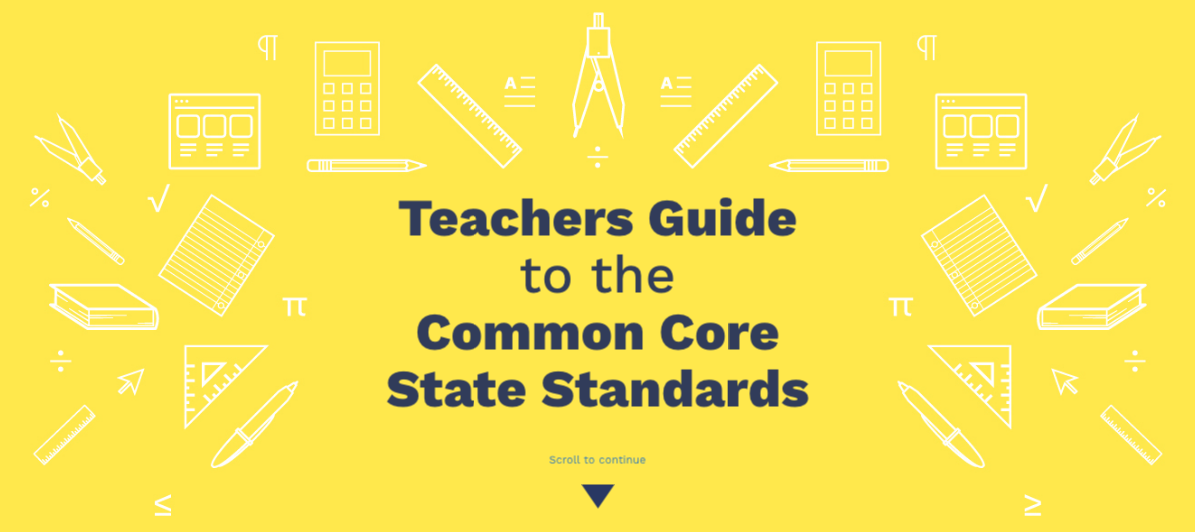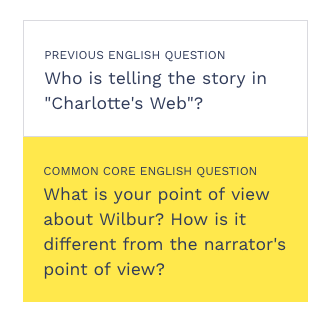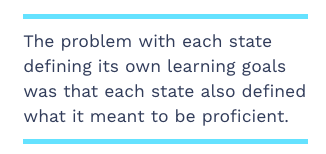The Three Types of Common Core Writing Defined

The common core might seem intimidating—all new standards, shifts in ideas and expectations—but it really isn’t so bad. I’ll admit that I like a lot of the new changes and initiatives. And once you see it explained in clear and concise way, like in this Teachers Guide to the Common Core Standards put out by the USC Rossier School of Education, you’ll see that it’s actually pretty logical. But one area that teachers might need a little more help on is the three kinds of writing.
As explained in the USC Rossier infographic, “There are three writing capacities: writing to persuade, writing to explain, and writing to convey real or imagined experiences.” These three types of writing are usually called argument, informative, and narrative writing.

- Argument writing is often called persuasive writing, but my take on the difference is that while persuasive writing was often more about the rhetorical elements, or how the writing sounded, argument writing is always based in fact and evidence.
The old SAT essay, for example, tasked students with writing on a general prompt, and what they used for evidence—life experience, science facts, a novel they read in class last year—was almost irrelevant. (The new SAT tasks students to write about a text.) Argument writing is about interpreting the evidence—whether that is the literary elements of a poem or the data acquired through a series of experiments—and writing an essay with the goal of proving an idea or point about that evidence.
For ELA classes, an argument essay might take the form of proving a point about a character’s motivations, something like “Heathcliff’s abuse of the people in his life is a factor of the neglect and abuse that was inflicted on him when he was a child” while in a history class it might be something like “The reason why we should not celebrate Columbus Day as a national holiday is that Columbus committed genocide on the Native Americans.” While the argumentative essay is always based on facts and evidence, it also always makes a point about them. You know that you have an argument when someone else could have a counterclaim for that argument (saying, for example, that Heathcliff is pure evil or that Columbus is a hero).
- Informative writing is also known as informational writing. The purpose of an informational essay is to convey information.

Think about the questions that you look up on Google—“What is the life span of a house cat?” or “What are the systems that need to be put in place in order to maintain an organic farm?” This is also a lot of what many people read in their professional lives—it’s practical, informative, and necessary.
So, for example, if you want students to learn about the life cycle of the manatee or about the neighborhoods of Paris or about the biography of Edgar Allen Poe or about famous people who have succeeded because of their work ethic and growth mindset, then assigning an informative essay in which they explain what they know would be a good choice.
3. Narrative writing is what is often considered the creative stuff. So personal narratives, short stories, and poetry writing all fall under this title. Narratives can be true, like personal essays, or they can be made up, like short stories, or most often, they are a mixture of both. The purpose of narratives is to convey an experience to the reader.
I might write a narrative about one Thanksgiving dinner of my childhood, and through the vivid descriptions of the dishes, snippets of the conversations, and some suggestions of my emotions during those times, my reader would know a little bit more about what it was like to be nine-year-old me on that day.
Of course, anyone who reads any published writing knows that for the most part, some of the best writing combines at least two if not all three of the above categories. My favorite fictional novels are also incredibly informative and based on extensive research of time periods. Some of the most in-depth, researched, and objective science pieces start off with personal anecdotes. And I have probably learned more about natural science through poetry than through any other source. We write to convey our ideas, knowledge, and experience to a reader, and it doesn’t really matter what category that writing fits under, as long as it reaches the reader.
Looking for more information on the Common Core? Check out this simple but informative infographic on all things common core.
Christina Gil was a high-school English teacher for sixteen years, but she recently left the classroom to follow a dream and move with her family to an ecovillage in rural Missouri. She believes that teaching creative writing helps students excel on standardized tests, that deeply analyzing and unpacking a poem is a fabulous way to spend an hour or so, and that Shakespeare is always better with sound effects. When she is not hauling water to her tiny home, she can be found homeschooling her two kids or meeting with her neighbors about the best way to run their village.
